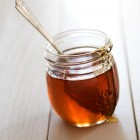The 8s
Coffee Talk: Navigating the coffee counter
December, 2015
| What ever happened to the dual choice of coffee or tea? With menus today featuring a variety of warm delights, it is no wonder that even an avid coffee connoisseur might feel a little intimidated navigating the coffee counter. To help conquer the choice overload, we’re sharing some basic tips for deciphering the lingo and deciding on the right brew for you. |
-
Coffee
 In other words: Nothing fancy, just regular coffee beans.
In other words: Nothing fancy, just regular coffee beans.
The method: Hot water is filtered through ground coffee beans to create a desired strength of coffee. You’ll generally have a choice of a light, medium or dark roast.
Character traits: Ripeness of the coffee bean, where it was grown, how it was processed, the size of the grind, the ratio of grounds to water—so many factors affect the taste of a coffee, it’s difficult to sum up its flavour. In general, dark roasts are oily and have a bitter caramel sweetness. Light roasts have fruity and nutty tones with an absence of oiliness. Medium roasts are, well, in the middle—less bitter than dark and bolder than light.
-
Espresso
In other words: A very small, strong coffee.
The method: Hot water travels through finely ground coffee beans compressed firmly together in a special filter.
Character traits: Served in tiny cups with a 1 to 2 ounce serving (single or double espresso). Espresso also has a natural crema (a coffee foam—like head on a beer). It has a strong, concentrated coffee flavour.
-
Americano
In other words: Diluted espresso.
The method: Hot water is run through espresso beans to produce a weak espresso in a larger volume.
Character traits: This beverage was the result of North Americans wanting less strength and more volume from a traditional espresso. It, not surprisingly, has a diluted espresso flavour.
-
Cappuccino
In other words: Espresso with steamed milk and an impressive layer of frothy milk foam.
The method: An equal combination of espresso, steamed milk and milk foam are combined for this traditional drink.
Character traits: Cappuccino is often characterized by its voluminous and frothy milk foam. It is rich in bold flavour and has a natural, creamy sweetness from the milk sugars. It’s often described as dessert-like.
-
Latte
In other words: A less complex cappuccino with more milk and less foam.
The method: A latte is similar to the cappuccino (espresso and steamed milk). However, it does not include foam in its main composition. Often times, foam is added on top of a latte as a decorative feature.
Character traits: Flavour shots! Many latte lovers will add a shot (approximately 0.4 ounces/40 calories depending on the café) of flavoured syrup (such as vanilla, hazelnut, chai, etc.), resulting in a sweeter and more flavourful drink.
-
Flat White
In other words: Essentially a strong latte.
The method: A flat white involves pouring a micro-foam base (steamed milk with tiny, velvety bubbles) overtop of a single or double shot of espresso.
Character traits: A New Zealand and Australian spin on the European cappuccino. Tastes like a strong latte but with no milky aftertaste.
-
London Fog
In other words: Steamed milk with a tea bag.
The method: This drink is much like a cup of tea but instead replaces the hot water with steamed milk. Most commonly, Earl Grey tea is used in the drink; however, many variations can be made using various types of tea.
Character traits: A soothing and low-key drink that’s easy to make and not overpowering in flavour. Creamy, light and mild in sweetness.
-
Café Mocha
In other words: Coffee and chocolate together at last!
The method: Varying amounts of cocoa powder, chocolate syrup and/or chocolate shavings are added to a cappuccino or latte.
Character traits: When deciding between a hot chocolate and a latte, this is the right choice for you. Creamy, sweet and chocolatey, t8n
Milking the Options
Many coffee shops offer a variety of milk and milk alternatives. Typically, non-fat drinks are made with skim milk, and full-cream drinks are made with homogenized. Other alternative milk options include almond, soy and coconut.













